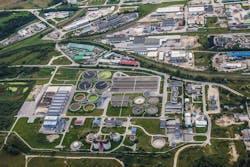Newer Water Treatment Methods May Produce Further Harmful Compounds
According to a new study executed at Johns Hopkins University, products resulting from newer water treatment practices, such as oxidation with hydrogen peroxide and UV light, may be more harmful than previously believed.
Transformation products created by oxidation processes are often thought to be less toxic than the compounds it breaks down, but researchers now claim this may not always be the case.
“Our results highlight that this is only half of the story and that transformation products might play a very important part when we think about the quality of the treated water,” said Carsten Prasse, lead author of the study and assistant professor at Johns Hopkins University.
The study focused on phenols, organic chemicals that are very commonly found within water supplies. Researchers oxidized the phenols using peroxide radicals, then added amino acids and proteins, allowing them to calculate backwards in order to pinpoint which compounds the phenol transformed into as a result of the process.
The results demonstrated that the phenol converted into products including 2-butene-1, 4-dial, which is a compound commonly associated with DNA damage on human cells.
Prasse sees the research as very promising because so little is known about the area of analysis for a process as difficult as water purification.
“We’re very good at developing methods to remove chemicals,” Prasse said. “Once the chemical is gone, the job, it would seem, is done, but in fact we don’t always know what removal of the chemical means: does it turn into something else? Is that transformation product harmful?”
The area of focus will now turn towards how the method used can be applied to increasingly complex samples while also studying other contaminants, according to Prasse.
